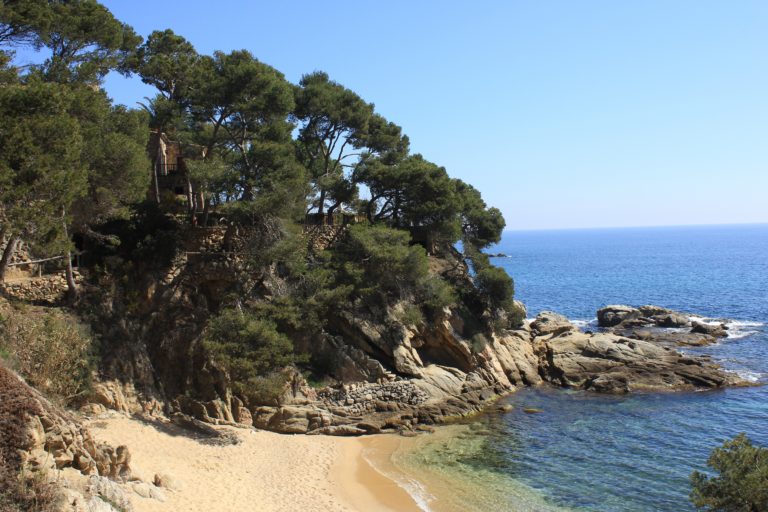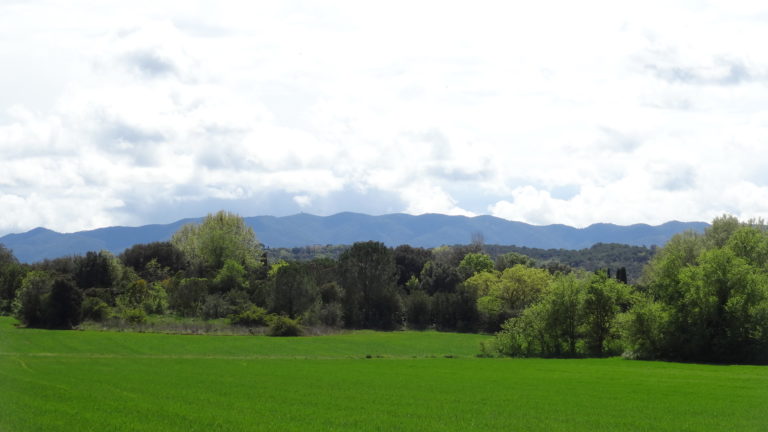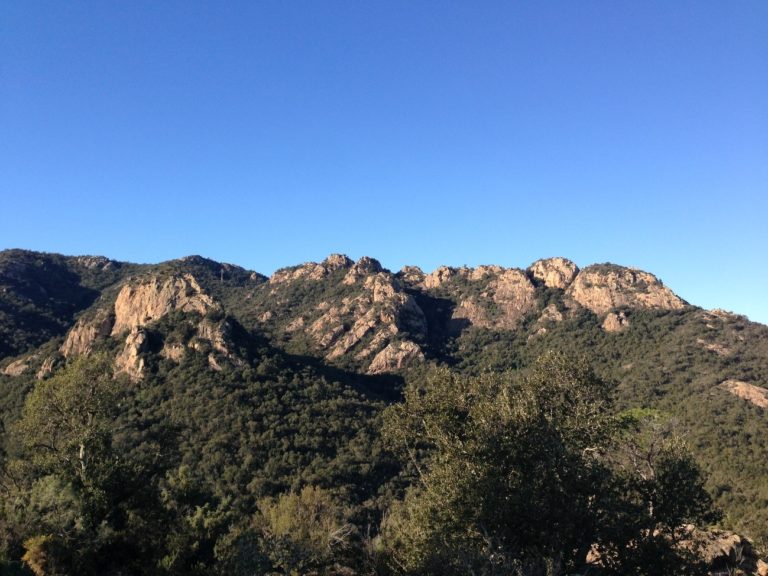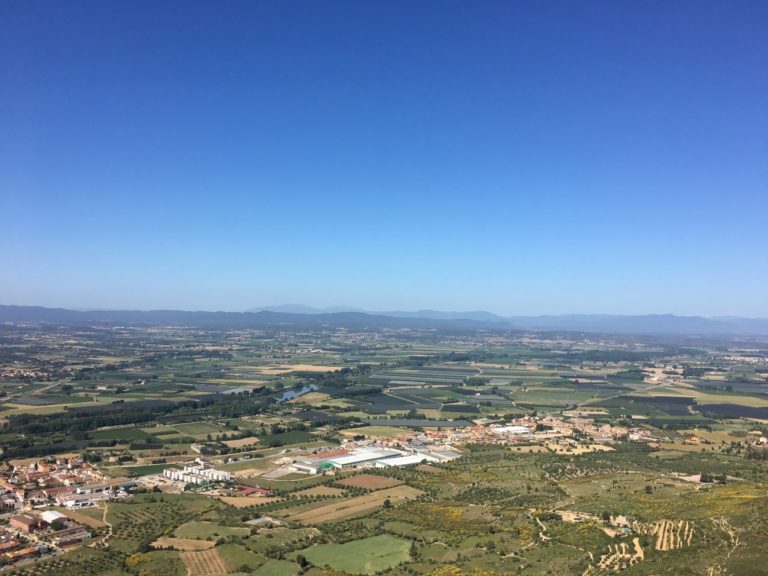Unique landscapes
The Baix Empordà cannot be summed up in a single image. The areas between the Montgrí, Gavarres and Ardenya–Cadiretes mountains and the Mediterranean make up a jigsaw as varied as it is harmonious. Shaped by time, the weather and human activity, the many different aspects of the landscape reward an attentive visit: from the flat farmed plains to the rugged coastal cliffs, each area shares the region’s character.
The variety of landscapes is one of the main attractions of the Baix Empordà. Many of the Baix Empordà’s landscapes are now protected natural spaces, including the Montgrí, Medes Islands and Baix Ter Natural Park and other spaces such as the Gavarres and Ardenya–Cadiretes massifs, the Begur mountains, Castell–Cap Roig, Canet Island and the banks of the Baix Ter river. This selection of natural landscapes gives the Baix Empordà an appearance that makes it unique.
The tramuntana, or north wind, is the Empordà’s most characteristic wind. While it is clearly dominant in the Alt Empordà, in the Baix Empordà it competes with the garbí, or south wind. The combination of these meteorological phenomena creates a distinctive microclimate which is one of the factors responsible for the region’s landscape and flora and fauna. The effect of these winds was described by the author Josep Pla, the area’s most attentive observer.
“The tramuntana can bring rain, sometimes in abundance. But there comes a moment when the mercury starts to fall. Suddenly to the south, a mass of white clouds and the garbí wind appears, ready to make its entrance. And the wind from the opposite direction starts to dominate, until the barometers starts to rise again and its counterpart from the north regains its dominance. So it has been for thousands of years and for the years yet to come.” Josep Pla Notes del capvesprol (Notes on the Evening Sea Breeze).
-

The Costa Brava
The sea and the wind have shaped the rough contours of the Costa Brava’s incomparable landscape. The pine woods shrouding the coast contrast with the bare rock of the cliffs and surround the coastal paths that connect the coves and beaches of this coastline where you will find the most capricious forms.
-

Empordanet – Baix Ter
The ever-present Montgrí mountains dominate the patchwork of farms and woodland that covers much of the interior of the Baix Empordà. With its low hills, the large plain of farmland, wooded terraces and woodland of the Empordanet is irrigated by the rivers Ter and Fluvià and their many tributaries. The land’s plentifulness explains the numerous towns, villages and farms that have shaped the region for centuries. By the sea, crops share space with lagoons and marshes.
-

Gavarres
The Gavarres mountains are a chain of hills and peaks that form the backdrop to the south of the Empordanet. The curve they sketch forms the edge of the plain and continues to the sea. The Gavarres are a land of low, dense holm oak woodland contrasting with more open cork oak woods. The many paths that criss-cross the mountains, as well as the megalithic monuments, churches and farmhouses, show how the area has been inhabited for millennia.
-

Ardenya – Cadiretes
The southern end of the Baix Empordà is dominated by the Ardenya–Cadiretes mountains. This area of granite masses covered with cork oaks, holm oaks and pines reaches all the way to the sea and creates a system of small coves sheltered by cliffs. Inland, the terraces on some of the landscape’s slopes reveal the area’s winemaking history. Along with the Gavarres, this mountain range forms the Vall d’Aro where the Ridaura river flows.
-

Terraprim
Fed by the Ter and Fluvià rivers, the fields of the Terraprim create a patchwork of colours that change as the seasons pass, contrasting with the constant green of the pine and holm oak woods that form the backbone of this fertile and welcoming landscape, which is dotted with small villages, houses and farms that blend into their surroundings fully.





